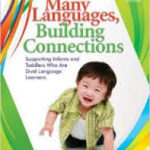Dual Language Learners
by Grace Pires, High School Student & Volunteer at Promise the Children and Girl’s Inc.
With the way the world is now seamlessly interconnected– whether through technology, trade, or facilitated travel– it is  beneficial for people to speak more than one language. Oftentimes young preschoolers are only taught English, and begin studying another language at middle school age. This is great for monolingual children, but it can hurt children who are already bilingual. In the classroom, children don’t have many opportunities to speak languages besides English. But there is a way for children to retain their second language.
beneficial for people to speak more than one language. Oftentimes young preschoolers are only taught English, and begin studying another language at middle school age. This is great for monolingual children, but it can hurt children who are already bilingual. In the classroom, children don’t have many opportunities to speak languages besides English. But there is a way for children to retain their second language.
Speaking a foreign language helps give a child a beneficial advantage. And what better place to learn and practice then with the people who taught them? Parents should encourage their children to speak their foreign language outside of school. The child will still be practicing their English inside of school while continuing to be bilingual.
Bilingualism has many benefits, such as how bilingual speakers outperform their monolingual peers with executive control tasks . It also prepares young students for their possible future endeavors to enter into jobs that involve global connections.
There are schools that offer entirely bilingual-centered teachings, especially in places where there is a large amount of foreign language speakers (such as Spanish/English schools in cities with many Latinos). These schools may be less in demand than regular preschools that only teach English. They may receive their funding from organizations that promote bilingualism like the National Association for Bilingual Education.
But for those who cannot afford these schools it is imperative that normal schools not discourage children from speaking their language while also learning English. Discouraging children from bilingualism can harm the child’s self-esteem and even limit their future. Fully English speaking classrooms that do not allow children to speak to one another in their native languages are counterproductive.
Classrooms are often diverse, with English and non-English speakers alike in the same learning environment. When teaching English as a second language, teachers should incorporate visual images into their lessons to include the children who don’t fully understand English yet. We hope that all teachers will continue to promote bilingualism while teaching English and that parents will do their part to help preserve their child’s native language.
Visit PromisetheChildren for more information and sign up for our timely action alerts. Communicating with you via our web site and social media costs a bit of money! Please consider a donation because we are volunteers who need your help in order to tell you about the needs of our nation’s young children. Please like us on Facebook and follow us on Twitter! Thanks.


I find it incredibly sad when children lose their native language. It happened to my father when he started school. Teachers told my grandmother to speak English instead of French to him at home, and now he doesn’t understand a single word of French. We need to get over this idea that English is the most important language and that it should be learned at the expense of any other language.
Thank you!